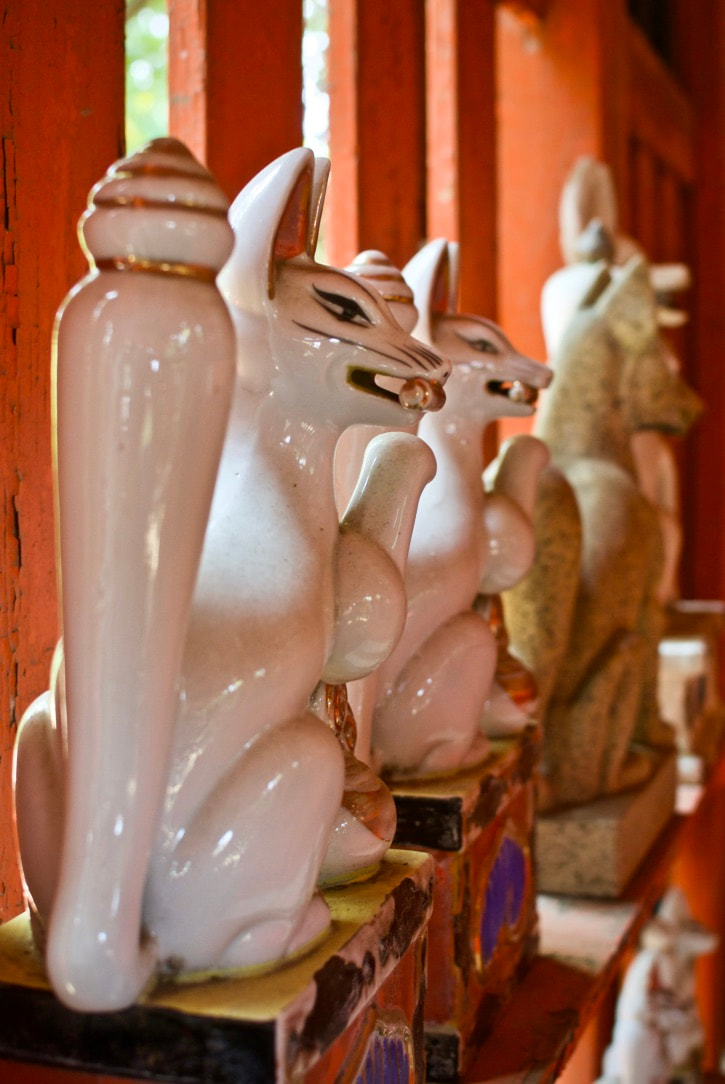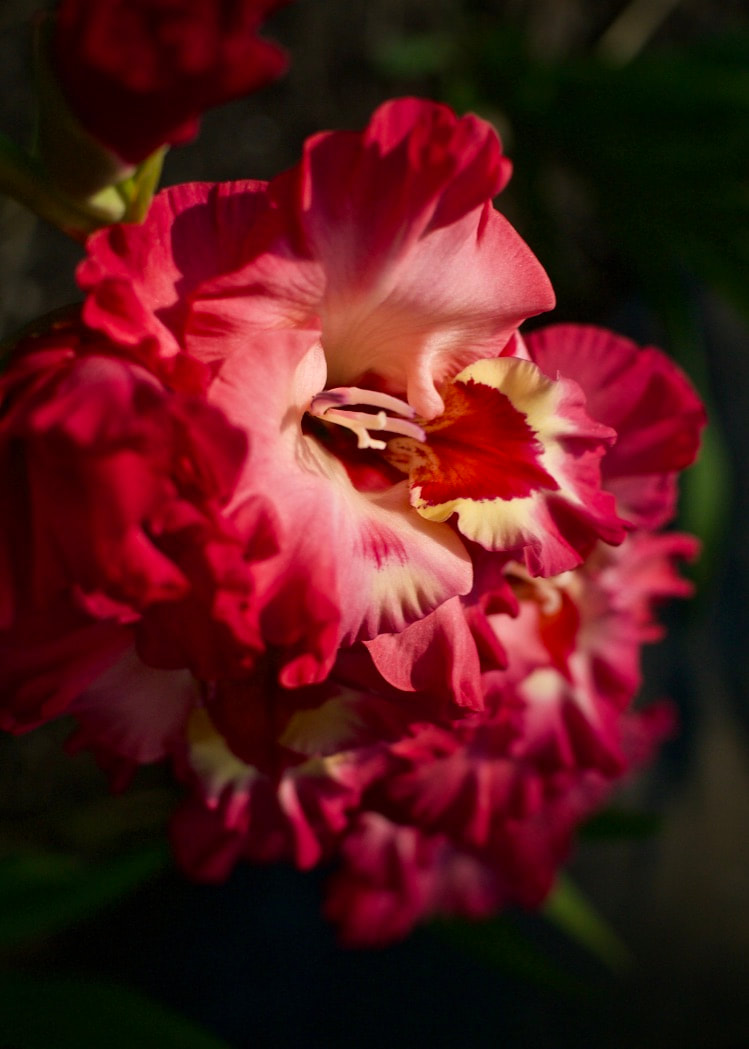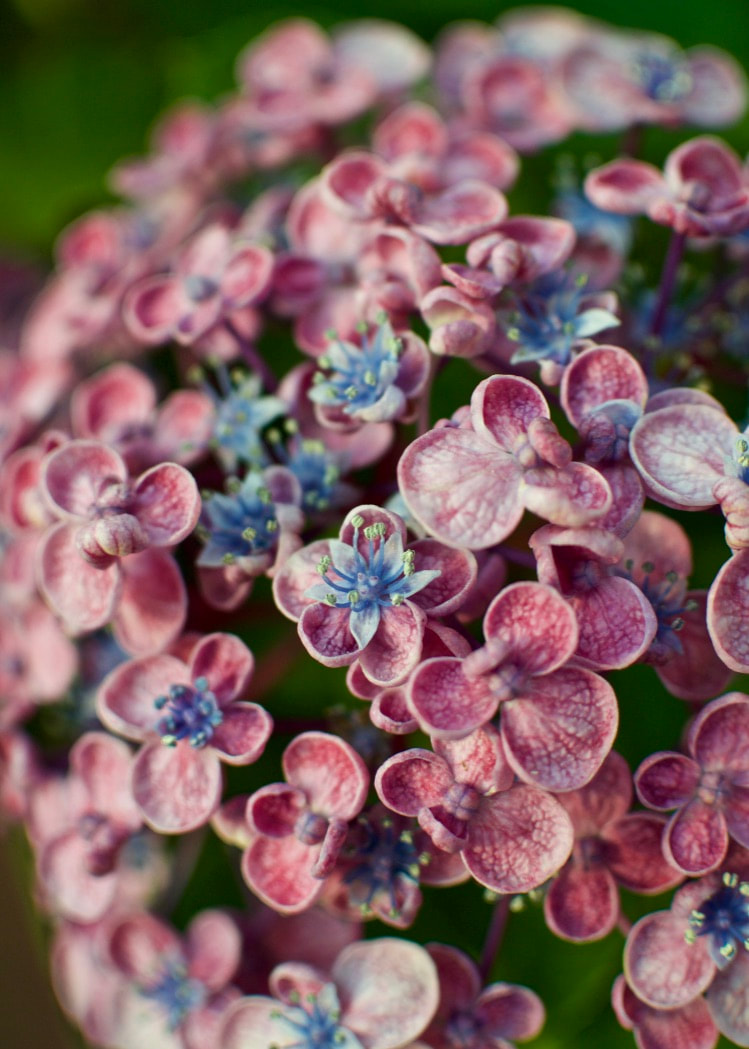|
A combination of rain, humidity, and a heavy work load has meant that I haven't had much of a chance to be out and about. However, there are always photos waiting to be edited and so I've been going through my photos when I have time. Let's see...
This one is from a local Shinto shrine dedicated to Inari, a Shinto god or spirit. In ancient times foxes ("kitsune" in Japanese) and humans lived in close contact with each other and this gave rise to various legends, many of which originated in China.The fox was thought to be very intelligent and to possess supernatural abilities including shapeshifting into human form. In Japan, they are closely associated with Inari and serve as the spirit's messengers. As a result, if you visit an Shinto shrine that is dedicated to Inari (apparently more than 1/3 of all the Shinto shrines in Japan), you will inevitably see statues and images of foxes and the more you look, the more you will find. Some people even offer sacrifices to the "kitsune" messengers as deity because of their potential power and influence. Me? I just love the varying shapes, sizes and designs that can be found when comparing various "kitsune" and the colour contrasts with the reddish-orange of Shinto shrines. "Kitsune" can range from very small to very large and from very detailed to almost abstract. This particular arrangement was a first as I had never seen so many all lined up in a row - and each was different from the other. There must have been more than 10 lined up on each side. Next time I'll count!
0 Comments
Today I was looking through photos from my visit to my parents' farm last summer and I came across some of my mother's flowers. My parents no longer live on the farm but at the time my mother had 7 separate gardens and all of them, except one, were dedicated to flowers, mostly lilies.
Along the side of the one vegetable garden was a fence to keep out the deer and inside that fence my mother had planted flowers that grew tall and needed support, such as gladiolus. They were in bloom while I was there and the colours were so rich and glorious! To be honest, I found them quite challenging to photograph because of their shape and the location along the fence. (Imagine me hemmed in by the corn on one side and the fence on the other, trying to angle the camera so I could get the light I wanted but without the fence being a part of the image. Not so easy!) After repeated tries, I finally came up with this. Ah...they were so lovely! In the previous post I wrote about starting 4 hydrangea cuttings. So far we have most certainly lost one, if not two. One looks quite healthy but that's the only one I have any confidence about. Only time will tell. I will keep you posted. (Update: Sadly, not a single cutting survived...)
Soon after the last posting, a good friend sent me a link to a website with all the names of the hydrangea varieties that can be seen at a city park in Kobe. (See the link below.) To my delight I discovered the name of hydrangea variety that I like so much. It's called "uzu-ajisai" and is also sold in flower shops as "otafuku-ajisai". Apparently "uzu" refers to a whirlpool and the unique shape of the petals are thought to mirror the swirling of the water. ("Ajisai" means "hydrangea".) The photo below is also "uzu-ajisai" but is a little pinker than the one in the previous post. It grows in front of an elementary school I pass every time I visit my mother-in-law's house. It was the first "uzu-ajisai" I had ever seen and I have made a point to seek it out every time hydrangea season comes around. I'm so pleased I can now identify this variety. Only how many more to learn? (^.~) (Take a look at the link to get an idea! The hydrangea are divided into 5 main types and then further subdivided. There must be over 100 different names. <http://hottime.sakura.ne.jp/ajisai.htm>) |
BLOG
I'm a photographer based in Osaka, Japan. I love to take photographs. I like to share.
Archives
April 2023
Categories
All
|




 RSS Feed
RSS Feed